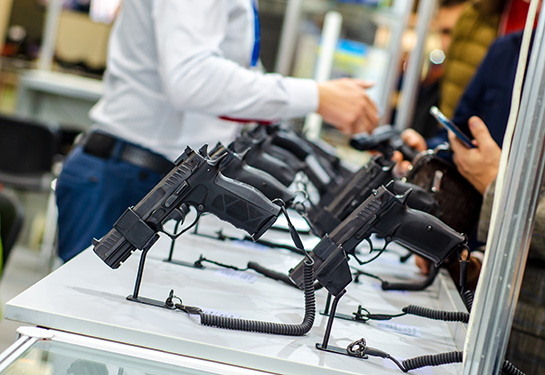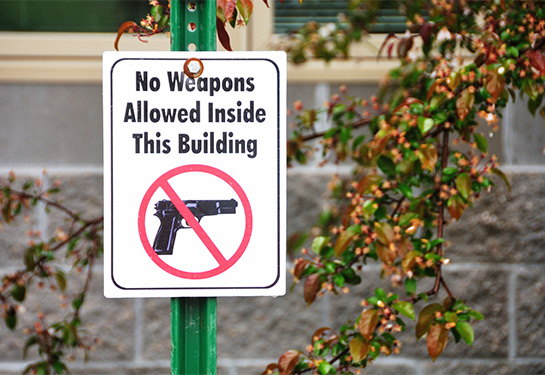Can records of firearm purchases help prevent mass shootings?
Study found mass shooters have distinct patterns of buying guns
The increase in gun violence in the United States has put pressure on law enforcement and others to find ways to reduce it. In 2022, there were 647 mass shootings, up from 383 in 2016. There has also been a three-fold increase in active shooter events between 2000 and 2016. These are defined as “one or more individuals actively engaged in killing or attempting to kill people in a populated area.”
A first-of-its-kind study examining records of gun purchases in California found that mass and active shooters have distinct patterns of buying guns compared to other legal purchasers. The UC Davis Violence Prevention Research Program (VPRP) research was published in the Journal of Criminal Justice.
“Efforts to develop tools to predict who will commit violence have fallen short of expectations,” said Liz Tomsich, a research data analyst at VPRP and the first author of the study. “These new findings of pre-attack acquisition behaviors among mass and active shooters suggest purchasing histories that may deserve further scrutiny for preventing mass shootings.”
Methods
The researchers used publicly available databases to identify active and mass shooters from California who committed attacks between 1985 and 2018.
A crime analyst at the California Department of Justice cross-referenced media reports and criminal and transaction histories to compose workups for each mass and active shooter.
Using the workups, researchers linked shooters who attacked between 1996 and 2018 to the California Department of Justice Dealer Record of Sale database. With this, they could identify shooters with a history of authorized transactions.
The database has recorded information on all authorized handgun purchasers and transactions in the state since 1985, with detailed transaction data beginning in 1996.
The more comprehensive data starting in 1996 allowed the researchers to compare mass and active shooters’ histories of firearm acquisition with those of other authorized purchasers on a variety of factors.
In addition, the study examined factors associated with firearms acquired closer to the date of attack among a set of individuals from California who committed a mass or active shooting between 1985 and 2018. These were analyzed whether or not they had a record of legal purchase.
These new findings of pre-attack acquisition behaviors among mass and active shooters suggest purchasing histories that may deserve further scrutiny for preventing mass shootings.” —Liz Tomsich, research data analyst, UC Davis Violence Prevention Research Program
Results
The researchers identified several distinct patterns of gun purchases for buyers who went on to commit mass shootings. Compared to other legal gun purchasers, mass and active shooters who perpetrated an attack between 1996 and 2018 and had a history of authorized purchasing:
- purchased more handguns in the year before the attack
- purchased their first gun at an older age
- were more likely to have a history of purchase denials
Some buying patterns suggest pre-attack planning and a desire to have a firearm purchase record that was harder to trace. Analyses of individuals from California who perpetrated a mass or active shooting between 1985 and 2018 found that firearms acquired closer to the date of the attack were more likely to be:
- long guns
- used during the attack
- purchased out-of-state
- acquired in an unauthorized manner, even among some mass and active shooters who were not prohibited from buying guns at the time of purchase
Limitations
The researchers noted that the study had limitations. The sample size of 22 mass and active shooters in the case-control analysis was small, which limited their ability to look at multiple independent variables.
The researchers were also limited by the information available in the databases. The more detailed Dealer Record of Sale transaction data began in 1996, excluding a case-control analysis of shooters who committed an attack before 1996.
The team also could not examine long gun characteristics and acquisition patterns in the case-control analysis. The researchers did not always have detailed histories of unauthorized gun acquisitions.
“The findings inform our understanding of behaviors among mass and active shooters,” said Hannah S. Laqueur, an assistant professor in the Department of Emergency Medicine and senior author of the study. “Future research could aid in the determination of whether the acquisition patterns characterizing mass and active shooters could be used in conjunction with other indicators of pre-attack planning to trigger a response from law enforcement and other intervention specialists.”
Additional authors include Andrew Crawford, Chris D. McCort and Garen Wintemute from VPRP and the California Firearm Violence Research Center.
Funding
This research was supported by the National Institute of Justice (award No # 2018-75-CX-0026) and the California Firearm Violence Research Center.
Resources
The UC Davis Violence Prevention Research Program (VPRP) is a multi-disciplinary program of research and policy development focused on the causes, consequences and prevention of violence. Studies assess firearm violence, the social conditions that underlie violence, and the connections between violence, substance abuse and mental illness. VPRP is home to the University of California Firearm Violence Research Center, which launched in 2017 with a $5 million appropriation from the state of California to conduct leading-edge research on firearm violence and its prevention. For more information, visit health.ucdavis.edu/vprp/.






